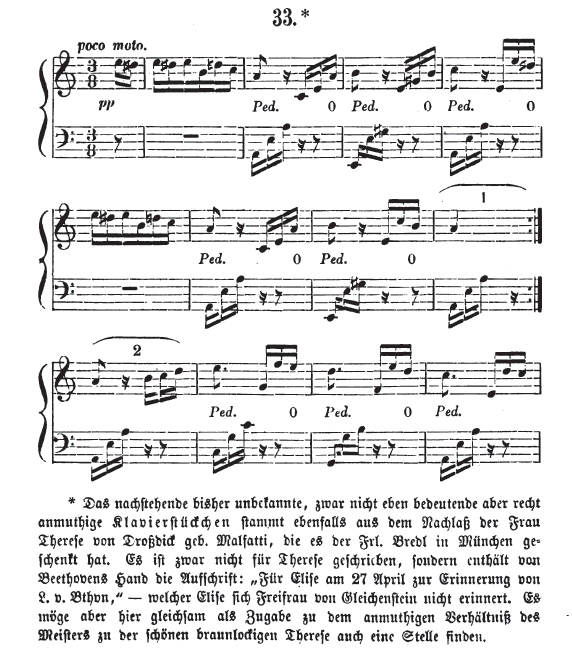Beethoven was magical when it came to composing musical pieces that were grand on the outside and harmonious on the inside. Fur Elise by Beethoven is a piece which is subtle, gentle, calm, serene and peaceful without any robust movements that ramifies the soul into another emotion. Of all the great (or perhaps greatest) pieces done by Beethoven the Fur Elise or the Bagatelle No. 25 in A minor is the most elegant one.
The Bagatelle was complete in the year 1810 and the only proof for such accounting is by Ludwig Nohl, who was a researcher and he declared to see the original dedication signed by Beethoven himself. The news of such dedication was made public to the world in the year 1865, but Beethoven died in the year 1827 leading to a lot of speculations about the claim of Ludwig Nohl. Interestingly, the dedication piece autographed by Beethoven is lost to public ever since Nohl made the announcement.

Keeping aside the popular belief, it is also believed that that the Bagatelle No. 25 is name after Fur Therese. Beethoven loved Therese for many years during the prime of his career and scholars believe that Ludwig Nohl might have misinterpreted the not-so-beautiful hand writing of Beethoven and declared the piece as “Fur Elise” instead of “Fur Therese”. As the score was published four decades after the death of Beethoven there isn’t much precision about the details of this work.
However, there is evidence that Beethoven made modifications to Fur Elise in the year 1822, but it was never released as one of his works whilst he was alive. He added a lot of material to the original version and made some significant changes. The piece is categorized into the three sections and section-A is most famous amongst pianists who use this as a fundamental for the students. It is a very intricate piece difficult to master, but provides great pleasure to anyone who listens to it.
Bagatella No. 25 in A Minor - Download in PDF
Listen or Download Bagatelle No.25 in A minor
{Note: You will be redirected to another page}